This website uses cookies so that we can provide you with the best user experience possible. Cookie information is stored in your browser and performs functions such as recognising you when you return to our website and helping our team to understand which sections of the website you find most interesting and useful.
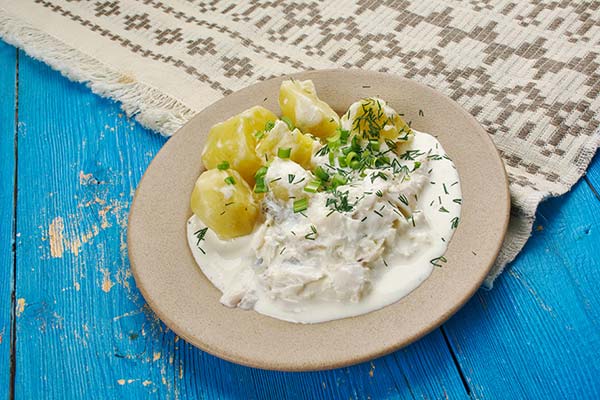
Food & drink in Iceland
When we think of things to do in Iceland we are met with images of stark, natural beauty, rugged landscapes that are out of this world, and of course the mesmerising display of the northern lights. But not many people know much about the cuisine, and if they do, thoughts are usually drawn to boiled sheep heads and rotten fish. However, due to the historically poverty-stricken country, they have become masters at making use of their local supplies, importing much less than the rest of the world. As such, their food is the epitome of farm to fork cuisine. A bounty of fresh fish is caught daily, meat is reared locally and the vegetables are as organic as you can get.
What food is Iceland famous for?
Bakari (bakeries)
Icelanders love their ‘coffee and cake time’ and could not live without a bakery nearby. These are brimming with delicious, sugary treats. A favourite is the Icelandic pӧnnukӧkur (pancakes) which are sweet, thin and coated in cinnamon. The Icelandic kleinur (doughnuts) and ástarpungar (dough balls) are also well-loved.
It is a well-known fact that Scandinavia do incredible pastries, and Icelandic cuisine takes a lot of influence from the Danish. The vinarbraud is a classic pastry filled with custard and sprinkled with icing. Another dessert unique to Iceland is the skyre cheesecake. Delicious!
Bring snacks! Food can be quite costly in Iceland so it’s best to bring some with you for day trips and long hikes.
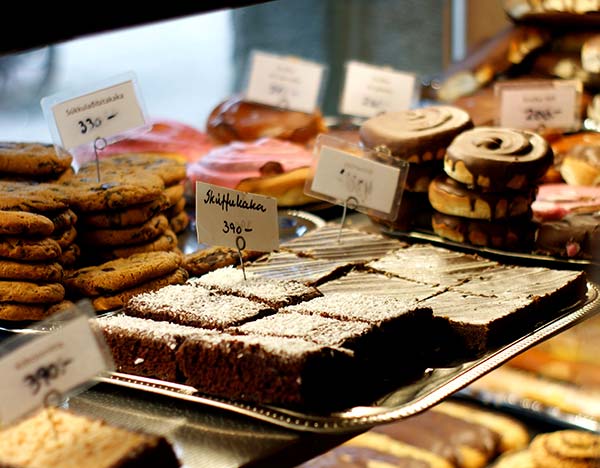
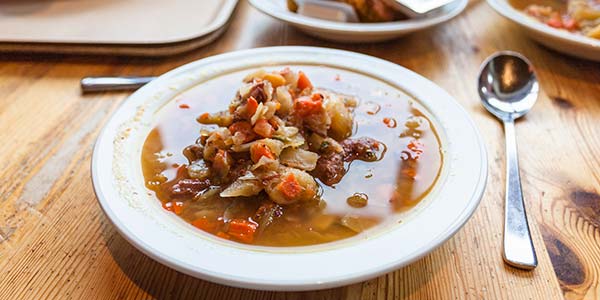
Stews & soups
Due to the climate of Iceland, you’ll find that the majority of meals tend to be some form of soup or stew. The Kjösúper is a particular favourite and somewhat of a delicacy in Iceland. It is a rich soup made from lamb, cabbage and root vegetables with every family claiming to have the perfect recipe!
Plokkfiskure (fish stew), screams Iceland. Fresh fish caught in the nearby waters, simple mashed root vegetables, and all thrown together in a sort of comforting, mashy stew. Add it to the dark rye bread and salted butter and it’s practically Iceland on a plate.
Vegetarian and vegan food in Iceland
Icelandic cuisine is heavily focused on meat and fish, but that doesn’t mean vegetarians and vegans starve! Vegetables are quite a rarity in the typical diet with almost all of their fruit being imported. But just because it’s not a standard doesn’t mean you can’t find it.
Reykjavik has a great selection of health-food stores and vegan restaurants, and almost all places serve vegetarian options.
Skyre is one of the best vegetarian meals out there. Skyr has been a beloved part of the Icelandic cuisine for over 1000 years and has even started to become popular in other parts of the world. It’s similar to yoghurt, but made with soft cheese and served with milk, sugar and sometimes fruit. Being packed with protein and low in fat, it has become a staple in any Icelandic diet.
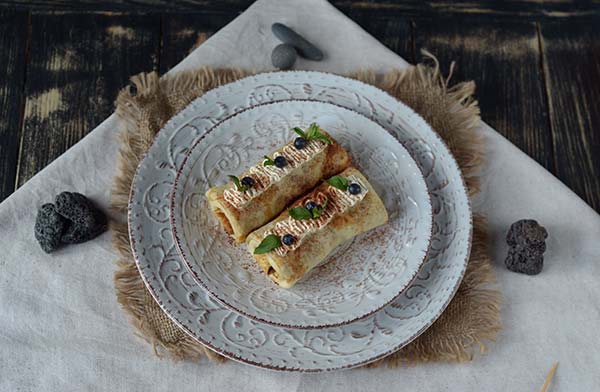
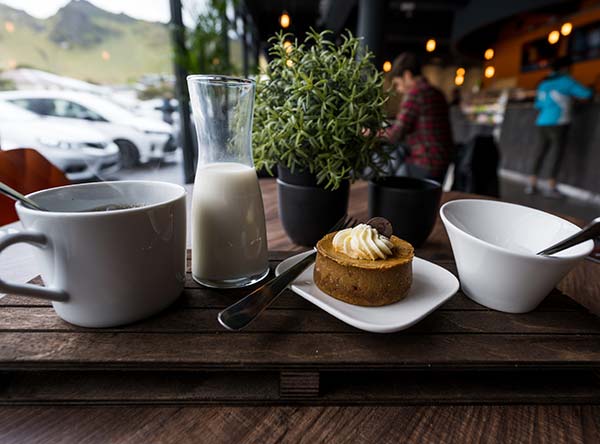
Drinks in Iceland
Brennivin is Iceland’s signature drink. Also goes by the names “burning wine” and “black death”. That should give you an indication of how strong it tastes! Brennivin is a clear spirit, much like vodka or schnapps and made from potatoes. It is the traditional accompaniment to Hákarl.
Iceland has developed a huge ‘coffee culture’, especially in the last few years. They are nuts for it! There’s a coffee shop on almost every street corner meaning the competition is quite extreme. This in turn has bought the quality to an all time high.As for beer, It might come as a bit of a shock, but beer above 2.25% was actually prohibited until 1989! Now, Icelanders regularly enjoy a pint, with lots of microbreweries popping up all over. There’s even a beer spa which offer beer-filled hot tubs!
What food should I try in Iceland?
Hákarl (fermented shark)
This wouldn’t be a guide on Icelandic food if we didn’t mention hákarl, the national dish of Iceland. This interesting meal is made by fermenting the poisonous Greenland shark for 4 – 6 months. What remains is a heavily ammonia-scented fish which apparently tastes about 100 times stronger than blue cheese. Would you dare to try it?
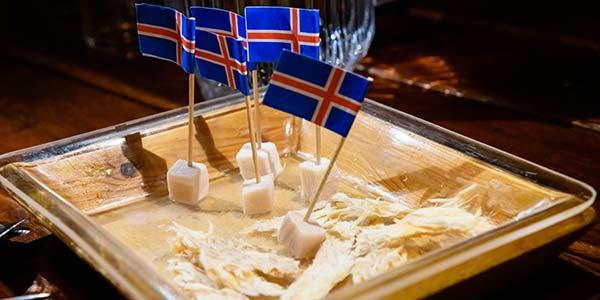
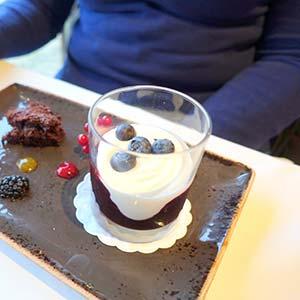
Skyr
Skyr has been a beloved part of the Icelandic cuisine for over 1000 years and has even started to become popular in other parts of the world. It’s similar to yoghurt, but made with soft cheese and served with milk, sugar and sometimes fruit. Being packed with protein and low in fat, it has become a staple in any Icelandic diet.
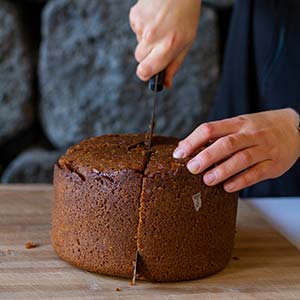
Rugbraud (dark rye bread)
Rugbraud is the most popular bread product in Iceland and is delicious! It’s served alongside most main meals, with their delicious salted butter. The traditional way to bake dark rye bread is by burying it in holes near the natural hot springs!
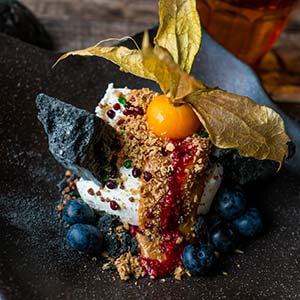
Icecream
It may come as a bit of a surprise for such a cold country, but Icelanders love their ice cream. They are big dairy consumers in general, but also believe that ice cream should be eaten on any day, at any time. And it is particularly good in Iceland. Local dairy farms make all the ice cream, so you know it’s good quality.
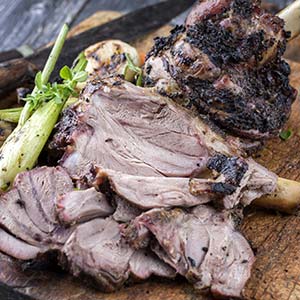
Lamb
Lamb is by far the most widely available and popular meat in Iceland. It is thrown into stews, boiled or smoked, but the preferred way to eat it is slow roasted. Compared to the rest of the world, the lamb here is practically gourmet. The sheep aren’t fed growth hormones and they spend their years freely roaming the countryside, grazing in the fields.
Pylsur (Icelandic hot dog)
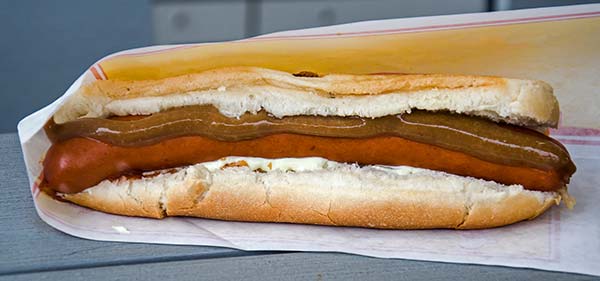
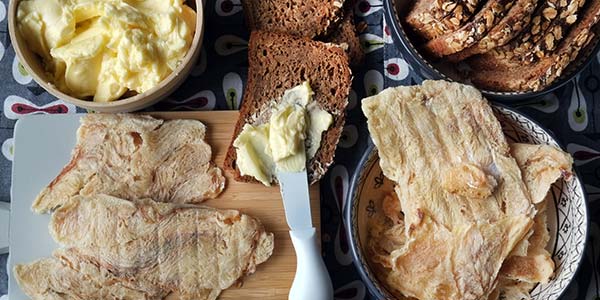
Hardfiskur (dried fish)
The most beloved snack in all of Iceland is (no surprise) dried fish. This can be any kind of fish really but the usual suspects are cod, haddock or catfish. Hardfiskur is generally enjoyed alongside salted butter and is a popular preference to popcorn or crisps as a movie snack.
Puffin
Not widely consumed these days but it is somewhat a delicacy in Iceland, and featured on most menus. This seabird tastes quite like a very fishy piece of beef. Usually prepared by smoking or boiling it in milk.
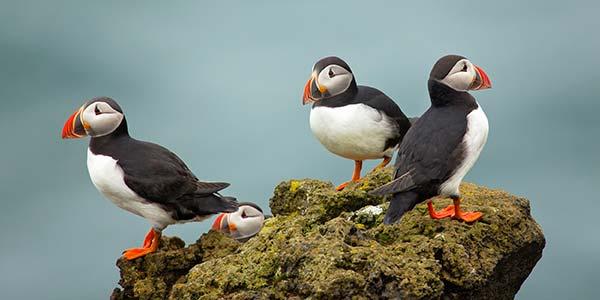
Featured Tours
We are passionate adventure travelers who want to share the world and our travel experiences with everyone…
